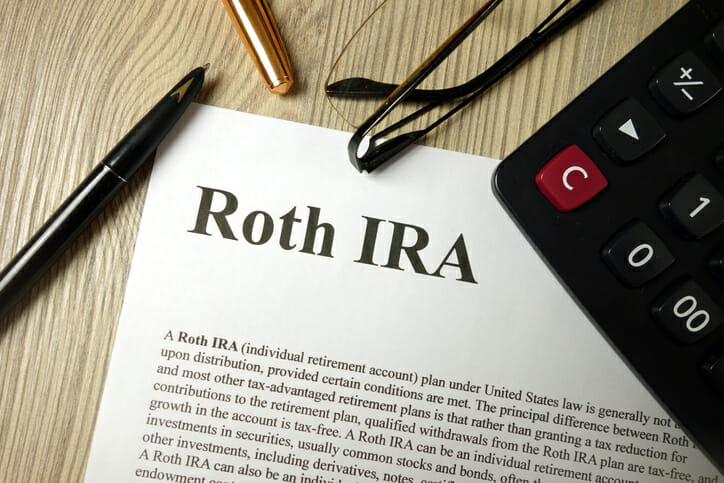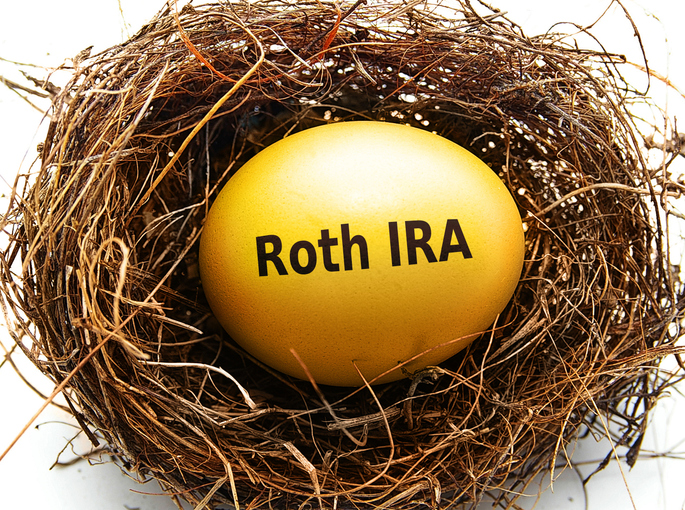A Roth IRA offers favorable tax treatment that can support long-term retirement savings. However, it is still possible to lose some or all of the money you contribute. Market volatility can reduce account value, while early withdrawal penalties and investment fees may also erode returns. It’s important to know any investment’s pros and cons before jumping into it with your own portfolio.
A financial advisor can help you accumulate and invest funds for retirement.
Understanding a Roth IRA
A Roth IRA is a retirement savings account funded with money you have paid income taxes on. This after-tax approach is different from traditional IRAs, which are funded with pretax dollars you can deduct from your current income for tax purposes.
Roth IRAs and traditional IRAs both let your money grow tax-free. When you start withdrawing from your Roth, both the money you deferred from your salary and the investment earnings can be withdrawn tax-free once you reach age 59 ½ and the account has been open for five years.
You’ll pay income taxes at your then-current rate when you make traditional IRA withdrawals. Roth IRAs are also exempt from the required minimum distributions that are mandatory for traditional IRAs after reaching a certain age. So as a result, your money can grow longer.
These advantages make Roth IRAs popular. And these advantages create powerful ways to save for those who meet income restrictions. However, that doesn’t mean you can’t ever lose some or all of the money you put into a Roth IRA.
Roth IRA Loss Factors
The reasons you can lose money in a Roth IRA are, for the most part, the ones that make any investment risky. Here are ways you could potentially lose money in a Roth IRA:
1. Price Volatility
Securities market prices fluctuate. And sometimes by a lot. So, if you put money into something that then goes down in value, your investment and your account are worth less. In extreme cases, you could invest in the common stock of a company that goes bankrupt. And as a result, it renders your investment worthless.
The same is true to varying extents of nearly all investments. Exceptions include special protections against loss, like annuities guaranteed by insurance companies or bank deposits covered by the Federal Deposit Insurance Corporation (FDIC).
2. Early Withdrawal Penalties
If you withdraw money from a Roth IRA before age 59 ½ or if the account hasn’t been open for at least five years, you may have to pay a 10% penalty on investment earnings you withdraw. While this penalty alone isn’t likely to wipe out your savings, it can significantly reduce the value of the assets in the account and contribute to a loss.
3. Investment Fees
Roth IRA owners pay fees to the plan as well as having to cover other costs, including broker’s commissions on transactions and expenses owed to mutual funds and exchange-traded funds that are owned in the account. Like early withdrawal penalties, these won’t by themselves ordinarily create a loss. But they can significantly reduce overall returns.
The Securities and Exchange Commission (SEC) calculated that if you invest $100,000 at an average return of 4% per year over 20 years, paying 1% in total ongoing annual fees will reduce the value of your portfolio by $30,000. And that’s compared to a portfolio that pays just 0.25% in annual fees.
If this all feels overwhelming then you may want to talk to a financial advisor to see how a Roth IRA can fit into your long-term financial goals, or if it is even the right account for you.
Preventing Roth IRA Losses

Despite these risks, it is far from inevitable that you’ll lose money in your Roth IRA. The average Roth IRA has historically yielded between 7% and 10% in annual returns. Here are ways you can reduce the risk of losing money in your Roth IRA and, potentially, earn close to or better than those average returns:
Diversify Your Investments
Spreading your investments among different asset classes such as stocks and bonds can help reduce the risk of market volatility causing a slump in one asset class that might cause you to lose money.
Similarly, investing in several different companies within an asset class spreads the risk. So as a result, you’re less likely to take a significant loss if one company drastically underperforms.
Seek Guarantees
If you open a Roth IRA at a bank protected by the FDIC, your deposit may be insured up to $250,000 per account covered by the national deposit insurance. According to the government agency, “retirement accounts in which plan participants have the right to direct how the money is invested” are covered. These include:
- Individual retirement accounts (IRAs)
- Self-directed defined contribution plans like 401(k)s or profit-sharing plans
- Self-directed Keogh plan accounts
- Section 457 deferred compensation plan accounts (both self-directed or not)
Annuities are also considered quite safe against loss because they are guaranteed by insurance companies. Although it’s still possible to lose money depending on the type of annuity and the financial stability of the issuer.
Watch Investment Fees
It can be difficult to obtain accurate and complete details on all the fees you pay to investment managers. That includes Roth IRA plan administrators, mutual funds and others. However, the work of asking hard questions and poring over plan documents can pay off by reducing the amount you pay in return-reducing fees.
Avoid Early Withdrawals
Try hard not to withdraw money early from your Roth IRA. Instead, try to account for opening requirements and penalty-free withdrawals. Penalties can reduce more than a year’s earnings which will be difficult if not impossible to make up. When you invest in any retirement account, it’s important to make sure you have a financial plan that accounts for things like emergencies so that you don’t have to resort to pulling funds from these tax-advantaged accounts.
Bottom Line

Like any investment, a Roth IRA can lose money. Losses may result from poor investment selection, market volatility, early withdrawals and investment fees. You can avoid losses by diversifying, watching fees closely, investing in safe assets and avoiding early withdrawals. It’s important to make a Roth IRA a part of your larger financial plan, if you decide to invest, which may require the assistance of a financial advisor.
Tips for Getting Retirement Ready
- Industry experts say that people who work with a financial advisor are twice as likely to meet their retirement goals. Finding a financial advisor doesn’t have to be hard. SmartAsset’s free tool matches you with vetted financial advisors who serve your area, and you can have a free introductory call with your advisor matches to decide which one you feel is right for you. If you’re ready to find an advisor who can help you achieve your financial goals, get started now.
- Another way to save for retirement is by taking advantage of employer 401(k) matching. SmartAsset’s 401(k) calculator can help you figure out how much you will have based on your annual contribution and your employer’s matches.
Photo credit: ©iStock.com/zimmytws, ©iStock.com/Piotrekswat, ©iStock.com/gorodenkoff
